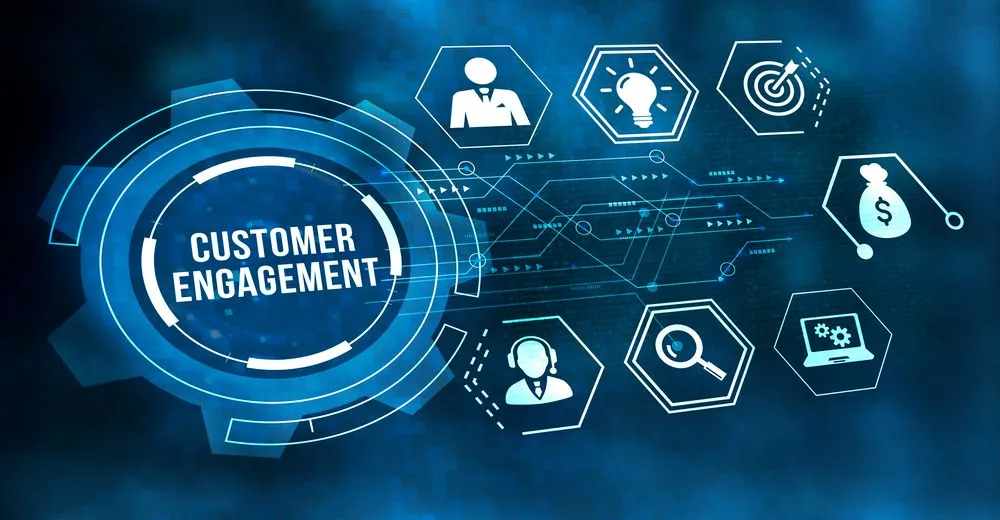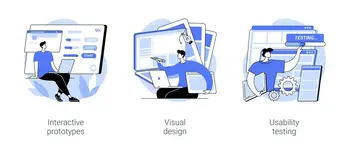
Table of contents
Unlocking visitor engagement with blog gamification is a powerful way to keep readers interested and invested in a website. Gamification is the process of adding game-like elements to non-game contexts, such as blogs. This can include things like badges, live chat, points, and leaderboards. By using these elements, bloggers can create a more interactive and engaging experience for their readers.
Gamification can increase engagement metrics such as comments, ratings, and reviews. This increase in engagement can lead to more traffic, more social shares, and more revenue. By using gamification techniques, bloggers can turn passive readers into active participants, creating a community around their blogs.
There are many ways to implement gamification on a blog, such as creating challenges, offering rewards, and providing feedback. By using these techniques, bloggers can create a more interactive and engaging experience for their readers. For example, a food blog might create a challenge to cook a particular recipe and offer a badge or prize to those who complete it. A travel blog might create a leaderboard of readers who have visited most countries. These techniques not only increase engagement but also create a sense of community among readers.
Defining Gamification
Gamification is the process of using game mechanics and elements in non-game contexts like blogs to motivate and engage users. It involves taking the core elements of games, such as points, badges, and leaderboards, and applying them to activities that are not typically considered games. The goal is to make the activity more enjoyable and engaging for the user.
Why Gamification Matters for Blog Engagement

Gamification is a buzzword that has been around for a while, and for good reason. It is a powerful tool for engaging your audience and keeping them coming back for more. In this section, we will explore the benefits it can bring to your blog.
Benefits of Gamification
There are several benefits to using gamification on your blog. Here are a few:
1. Increased Engagement
Gamification can help increase engagement on your blog by making the experience more enjoyable and rewarding for your visitors. According to some sources, gamification can increase visitors engagement by up to 100% .
2. Improved Learning

Gamification can also be used to improve learning outcomes. By adding game elements to educational content, you can make it more engaging and help users retain information better.
3. Increased Loyalty
Gamification can also help increase loyalty among your visitors. By offering rewards and recognition for completing certain activities, you can create a sense of accomplishment and encourage visitors to return to your blog.
In addition to these benefits, gamification can also help you gather valuable data about your visitors. By tracking their activities and behaviours, you can gain insights into what motivates them and how you can improve their experience on your blog.
Overall, gamification is a powerful tool that can help unlock visitor engagement on your blog. Adding game elements to your content can make it more enjoyable, engaging, and rewarding for your visitors. So give it a try and thank me later.
How does gamification benefit engagement?

There are a number of ways that gamification can benefit engagement. Here are some of the most common:
1. It can make tasks more enjoyable and engaging.
Games are often designed to be fun and challenging, which can make them more enjoyable to participate in. This can lead to increased engagement, as people are more likely to stick with tasks that they find enjoyable.
2. It can provide clear goals and objectives.
Games typically have clear goals and objectives, which can help people stay motivated. This is because people know what they are working towards, and they can track their progress towards their goals.
3. It can offer rewards and recognition.

Games often offer rewards and recognition for completing tasks or reaching milestones. This can help to motivate people to keep going, as they know that they will be rewarded for their efforts.
4. It can create a sense of competition.
Games often involve competition, which can be a great way to increase engagement. This is because people are naturally competitive, and they want to do better than their peers.
5. It can break down complex tasks into smaller, more manageable steps.
Games often break down complex tasks into smaller, more manageable steps. This can help people to stay focused and motivated, as they can see that they are making progress towards their goals.
Overall, gamification can be a very effective way to increase engagement in a variety of settings. By using game-like elements, gamification can make tasks more enjoyable, provide clear goals and objectives, offer rewards and recognition, create a sense of competition, and break down complex tasks into smaller steps. All of these factors can contribute to increased engagement.
How to Implement Gamification on Your Blog

By adding game elements to your content, you can make it more engaging, encourage visitors to spend more time on your site and increase the likelihood that they will return. However, implementing gamification on your blog requires careful planning and execution. Here are some tips to get you started.
(a) Choosing the Right Gamification Strategy
The first step in implementing gamification on your blog is to choose the right strategy. There are many ways to gamify your content, from simple point systems to complex quests and challenges. The key is to choose a strategy that aligns with your goals and appeals to your audience.
One popular strategy is to create a loyalty program that rewards visitors for engaging with your content. For example, you could offer points for commenting on blog posts, sharing content on social media, or subscribing to your newsletter. These points could then be redeemed for prizes, such as exclusive content or discounts on your products or services.
Another strategy is to create a game that is directly related to your content. For example, if you run a cooking blog, you could create a game that challenges visitors to create their own recipes using a specific set of ingredients. This type of game can be highly engaging and can encourage visitors to spend more time on your site.
(b) Creating Engaging Game Mechanics
Once you have chosen a gamification strategy, the next step is to create engaging game mechanics. Game mechanics are the rules and systems that govern how your game works. They are the building blocks of your game and can make or break its success.
One important game mechanic is feedback. Visitors need to know how they are doing in the game and what they need to do to progress. This can be achieved through a variety of feedback mechanisms, such as progress bars, badges, or leaderboards.
Another important game mechanic is a challenge. Visitors need to feel challenged by the game in order to stay engaged. This can be achieved by gradually increasing the difficulty of the game as visitors progress.
(c) Designing a User-Friendly Experience
Finally, it is important to design a user-friendly experience for your gamified content. Visitors should be able to easily understand how the game works and what they need to do to participate. The game should also be accessible on various devices, including desktops, laptops, and mobile devices.
One way to create a user-friendly experience is to use clear and concise instructions. Visitors should be able to understand how to play the game without having to read through lengthy instructions or tutorials.
Another way to create a user-friendly experience is to use responsive design. Your gamified content should be optimized for different screen sizes and devices. This can help ensure that visitors can easily access and engage with your content, no matter where they are or what device they are using.
(d) Build the Game
Whether you are a seasoned developer or a beginner, there are a variety of tools and platforms available to help you create a game that meets your needs and fits your skill level.
If writing code is not your cup of tea, one popular tool is
Gamify
. Gamify is a web-based platform that allows you to create games without any coding knowledge. It includes a drag-and-drop interface that makes it easy to create game mechanics, add graphics and sound effects, and publish your game to your website. Gamify also includes a variety of pre-built templates and game mechanics, making it easy to get started and create a game that is engaging and fun.
For those who are happy writing code, there are a variety of game engines and frameworks available that provide more flexibility and customization options. Some popular game engines include
Unity
or
Unreal Engine
and
Godot
. These engines allow you to create games for a variety of platforms, including desktop, mobile, and console, and provide a wide range of tools and features for creating complex and engaging games.
In addition to game engines, there are also a variety of libraries and frameworks available for building games with web technologies such as HTML, CSS, and JavaScript. Some popular libraries and frameworks include Phaser, Three.js, and Pixi.js. These libraries provide a variety of tools and features for creating 2D and 3D games, and are often used in combination with other web technologies such as WebGL and Canvas.
However, not everyone has the time or expertise to learn how to develop games for their websites. That’s why we, at Interactivity Hub offer a range of services that can help you create the perfect game for your needs, without the hassle of learning how to do it yourself.
Our team can work with you to identify your goals and objectives, and create a game that meets your needs and fits your budget. We use a variety of tools and platforms, including Gamify, Adobe Animate, and other game engines and frameworks, to create games that are engaging and fun.
(e) Marketing Your Gamified Blog
Once you’ve gamified your blog, it’s time to start promoting it. Here are some tips to help you market your gamified blog and boost engagement.
(f) Promoting Your Gamified Blog

The first step to promoting your gamified blog is to make sure it’s easy to find. Use search engine optimization (SEO) techniques to ensure your blog appears at the top of search engine results pages (SERPs). This will help people find your blog when they’re searching for topics related to your niche.
Another way to promote your gamified blog is to guest post on other blogs in your niche. This will help you reach a wider audience and establish yourself as an authority in your field. Make sure to include a link to your gamified blog in your guest post bio.
You can also promote your gamified blog by participating in online forums and communities related to your niche. Share your blog posts and engage with other members of the community to build relationships and drive traffic to your blog.
Using Social Media to Boost Engagement
Social media is a powerful tool for promoting your gamified blog and engaging with your audience. Share your blog posts on social media platforms like Twitter, Facebook, and LinkedIn to reach a wider audience.
You can also use social media to run contests and giveaways that encourage engagement with your blog. For example, you could offer a prize to the first person who completes a gamified challenge on your blog.
Another way to use social media to boost engagement is to create shareable content that encourages your followers to share your blog posts with their own followers. This could include infographics, videos, and other visual content that is easy to share and promotes your gamified blog.
According to HubSpot,
gamification can increase engagement by at least 30%
. By promoting your gamified blog and using social media to boost engagement, you can tap into the power of gamification and unlock visitor engagement.
The Power of Emotions in Gamification

(i) Understanding the Role of Emotions
One of the key reasons why gamification works is because it triggers emotions in users. Positive emotions such as happiness, excitement, and intrigue can lead to better engagement, loyalty, and higher sales. On the other hand, negative emotions such as frustration and disappointment can lead to disengagement and loss of interest.
Emotions have a bigger impact on customer loyalty than factors such as brand image, product utility, and customer service. In fact, customers who have an emotional connection with a brand are more likely to recommend it to others and less likely to switch to a competitor.
(ii) Incorporating Emotions in Your Blog’s Gamification
To unlock the full potential of gamification, you need to incorporate emotions into your strategy. Here are some ways to do this:
-
Use rewards that trigger positive emotions: Rewards such as badges, points, and leaderboards can trigger a sense of accomplishment and pride in users. This can motivate them to engage more with your blog and compete with others.
-
Create challenges that trigger a sense of curiosity: Challenges that require users to think creatively or solve problems can trigger a sense of curiosity and intrigue. This can keep users engaged and interested in your blog.
-
Use storytelling to trigger emotions: Stories have the power to trigger emotions such as empathy, joy, and sadness. By incorporating storytelling into your gamification strategy, you can create a deeper emotional connection with your users.
-
Provide feedback that triggers positive emotions: Feedback such as praise and recognition can trigger positive emotions such as happiness and pride. This can motivate users to continue engaging with your blog and strive for better performance.
Incorporating emotions into your gamification strategy can help you create a more engaging and memorable experience for your users. By triggering positive emotions, you can build a deeper emotional connection with your audience and increase their loyalty to your brand.
Overall, the power of emotions in gamification cannot be overstated. By understanding the role of emotions and incorporating them into your blog’s gamification strategy, you can create a more engaging and memorable experience for your users.
Examples of Successful Gamified Blogs
Gamification is a powerful tool for bloggers to increase visitor engagement and loyalty. Successful gamified blogs use game mechanics to make their content more interactive, fun, and rewarding. Here are a few examples of blogs that have successfully implemented gamification:
1. The Daily Post by WordPress
The Daily Post is a blog by WordPress that provides daily prompts and challenges to inspire bloggers to write and share their work. The blog uses gamification to encourage participation and engagement. Users can earn badges for completing challenges, and their posts can be featured on the blog’s homepage. According to WordPress, The Daily Post has over 10,000 active users and has generated over 1 million page views.
2. Hubspot
HubSpot is a marketing and sales software company that has a popular blog with over 4 million monthly visitors. The blog uses gamification to encourage readers to engage with the content and share it on social media. HubSpot’s blog has a leaderboard that shows the top contributors based on the number of shares and comments they generate. The company also uses quizzes and surveys to collect feedback and data from its readers.
3. Moz
Moz
is a popular blog about SEO and digital marketing that uses gamification to encourage participation and engagement. The blog has a Q&A section where users can ask and answer questions about SEO and digital marketing. Users can earn points and badges for answering questions and providing helpful answers. Moz also has a leaderboard that shows the top contributors based on the number of points they have earned.
These blogs have successfully used gamification to increase visitor engagement and loyalty. According to a study by Badgeville, gamification can increase engagement by up to 100%, and improve retention rates by up to 90%. By making their content more interactive, fun, and rewarding, these blogs have been able to attract and retain more readers.














